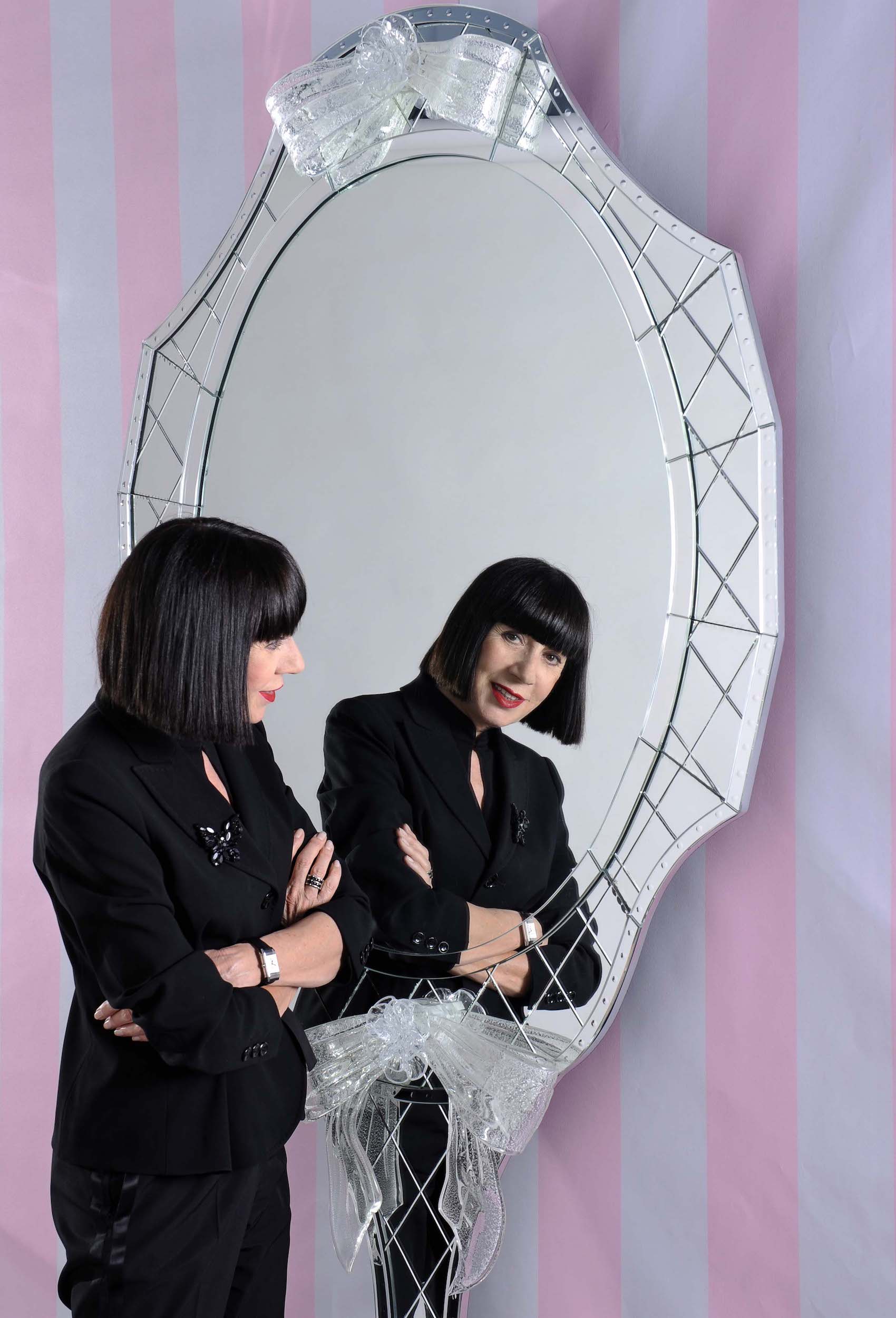A rebel persona, and the first designer to transform lingerie into a fashion statement and symbol of female empowerment, Ms. Thomass has contributed to the industry like no other. Recognizable for her fringe, her black and white attire, and signature pink ribbons, Chantal is one of the first women bosses to establish an independent fashion label in the 1970s.
Just after her auction 40 ans de Mode, which displayed her most iconic creations, Chantal looked back at her days of pushing the envelope and being part of the up-and-coming fashion gang of Thierry Mugler and Kenzo Takada.
AM: Chantal, you have recently celebrated your 40th year anniversary in the fashion industry, how do you look back at your career?
I did very interesting things in my life. When I started in the 1970s there were few young designers so we become like a support group and a click. At the time, established couture giants offered very traditional styles. I was friends with Kenzo and Mugler and we started doing small shows which was the beginning of the Paris Fashion Week we now know. In a way we inspired the chambre syndicale de la couture to incorporate ready-to-wear in their organization. I had great years and others that were quite challenging where I sought financial partners to sustain my production until I had to close down my business.
AM: The younger generations may not be aware that you first started as a prêt-à-porter designer. Why do you think lingerie took over your career?
In the beginning I was focused on ready-to-wear and achieved success and dressed iconic names like Isabelle Adjani, Claudia Schiffer and Naomi Campbell. But since my debut, I would always incorporate some lingerie pieces and the media would go crazy about them. At the time, lingerie was not fashionable it was just functional. So slowly my lingerie stole the limelight because I was the only one doing that. Lingerie had no meaning and the market offered only black and nude colors in classic styles. I wanted to create fun, sexy and original styles that worked well in the market and were powerful internationally. I liked lace and ribbons, and I employed handcrafted details. I am a firm believer that lingerie is an accessory that should match the outer appearance.
AM: Do you think being a Parisian French woman has helped you elevate your brand image internationally?
Without any doubt, the French woman is liberal. I would wear transparent things myself and lingerie as an outer garment. We enjoyed flaunting our bodies, we felt comfortable and proud of who we are.
AM: And what are your thoughts about how nudity is being perceived today?
People can no longer differentiate between what is refined or sexy and what is vulgar. I designed lingerie that made a woman feel happy and confident for her and not necessarily for her partner or the spectator.
AM: Is your fringe and all black-white look intentional?
Not really, it came spontaneously and is what I like to wear. Eventually it developed into a trademark. It actually started when I become a mother and opted for a practical look, a white shirt with black pants.
AM: Finally, do you consider yourself as a feminist?
Yes! We can be a feminist and feminine. Just because we take care of ourselves it does not signify that we cannot advocate for women’s rights. We are not objects but we still want to seduce.



